Ashes of?Souls
?A silent burial ground, where maybe the ashes of wounded souls are still?encircling.?Broken pieces of burnt smashed tiles with countless shards of glass can tell the tale of how staircases could not save hundreds of scorched living beings. Imagining myself at the place of these unfortunate garments workers who were burned alive, I felt vulnerable. Shoes, bangles or an unfinished ironed cloth in the stand or the half eaten evening tiffin are standing witness to how workers died helplessly. Pieces of glass bangles all over the floor, as mostly female workers had faced the tragedy, were witness to a violent disaster no one of them had even seen in nightmares. & thus by facing fire they lost their existence in a burning blaze? ? GMB Akash
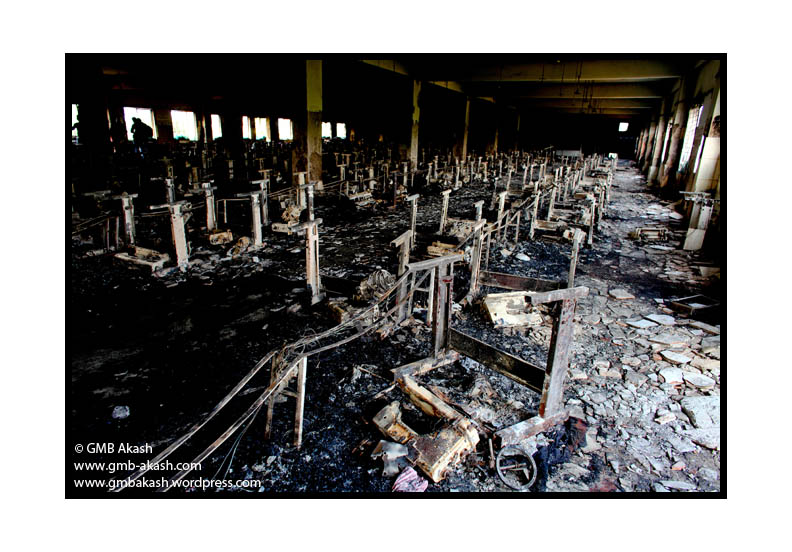
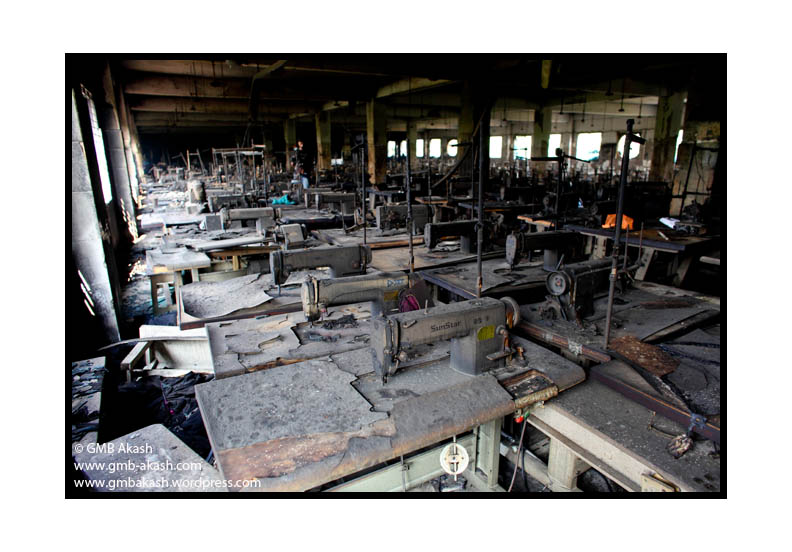
Tazreen Fashions, located in a rural area of Ashulia occupies a nine-storied building. The ground floor, which stored the factory?s raw materials, had the only entrance to the factory, with three staircases leading to other floors. The fire at the eight-story building of the apparel factory started on the first floor, quickly cutting off all three exits from the building. Survivors stated that at least one exit was locked while no emergency exits existed in the building whatsoever. Some workers tried to escape the fire by jumping out of the windows of upper floors ? many of them died. Others choked to death in the thick smoke of burning fabrics. Many of the bodies the firefighters found in the ruins were burnt beyond recognition. Later it was estimated that more than 1,000 people could have been inside the building when the fire started. But survivors claim more. It took more than two hours for fire fighters to arrive at the factory. Firefighters trying to reach the blaze were slowed because the narrow road leading to the factory made it difficult to get to the site and there was no source of water nearby. It took firefighters over 17 hours to douse the blaze at the factory, after it started on Saturday evening November 24. The fire at Tazreen Fashions Ltd, led to the death of reportedly 111 workers, but witnesses and survivors alleged that the real number dead is possibly much higher.
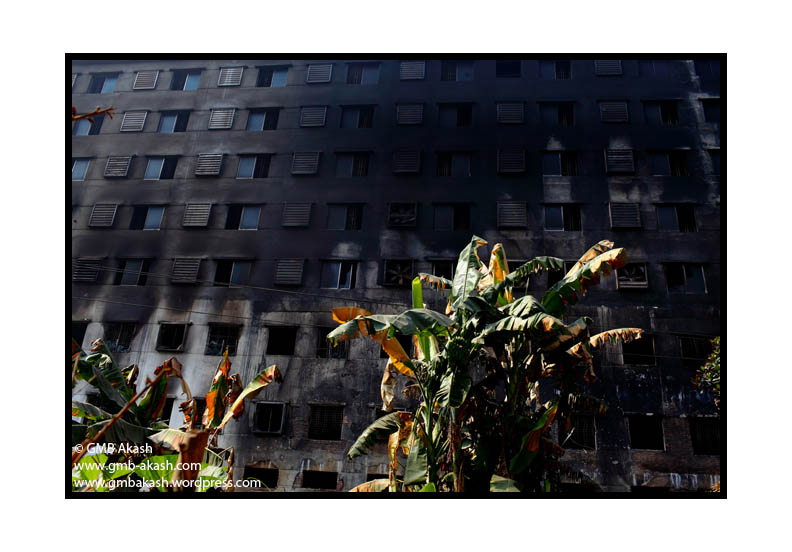

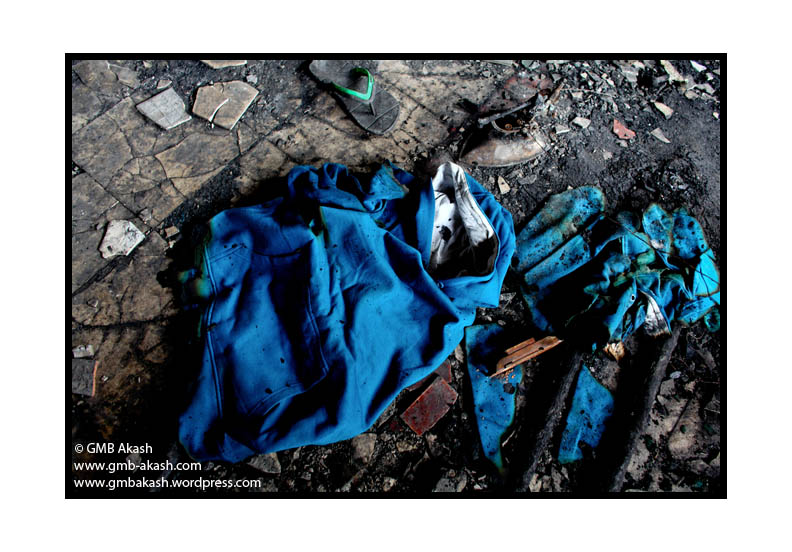
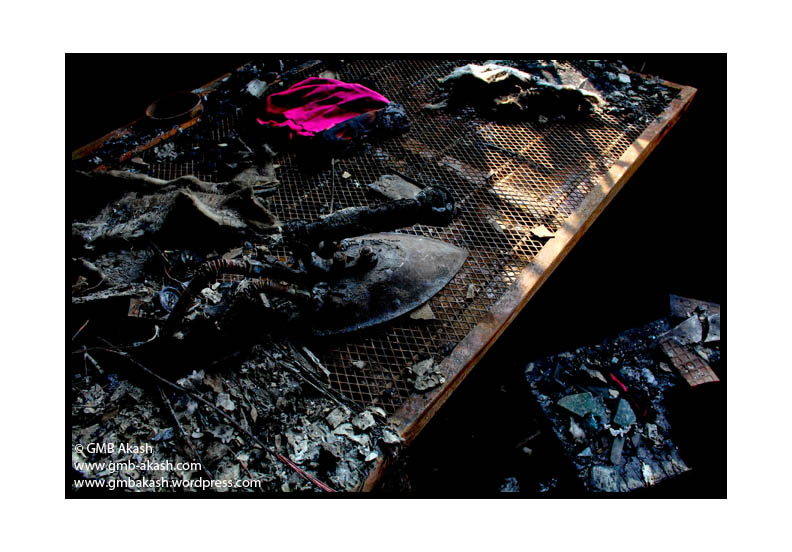
Raziv is one of the Survivors of the tragic incident; he worked at fourth floor along 300 other workers that evening.? He said, ?I smelt smoke and ran downstairs at third floor and found that the place was already full with black fumes and I could not breathe properly. There was the sound of crying women. ?The electricity went off within 5 minutes and most of the female workers had no mobile phone even to see using the phone light. With three of my friends I went at the small room of the third floor where at least 200 women were standing & crying helplessly. With another worker, I broke the window of the room and give the place to female workers to go out but most of them were afraid and could not do anything. I couldn’t be selfish to leave alone and helped them to jump through. But as soon as the fire increased I ran to the biggest exhaust fan of the floor. Many women workers were seated at prayer and many started losing consciousness. Only by hand, I broke out the fan but could not jump. The fire was so scary that I lost my courage, I called and cried to my brother, he just said ?Jump! Jump! Then I jumped to the roof of a shed next to the factory and found myself injured at the ground! I survived but I had no money for my treatment and no one offered to help, even after five days of the incident I am searching for my co-workers and have not had any money for my treatment. I come to the factory for my arrear payments for four months, no expectation from these rich bosses.? Along with Raziv, more fire survivors said that most victims died of suffocation as the blaze started on the ground floor warehouse, trapping the night-shift staff.
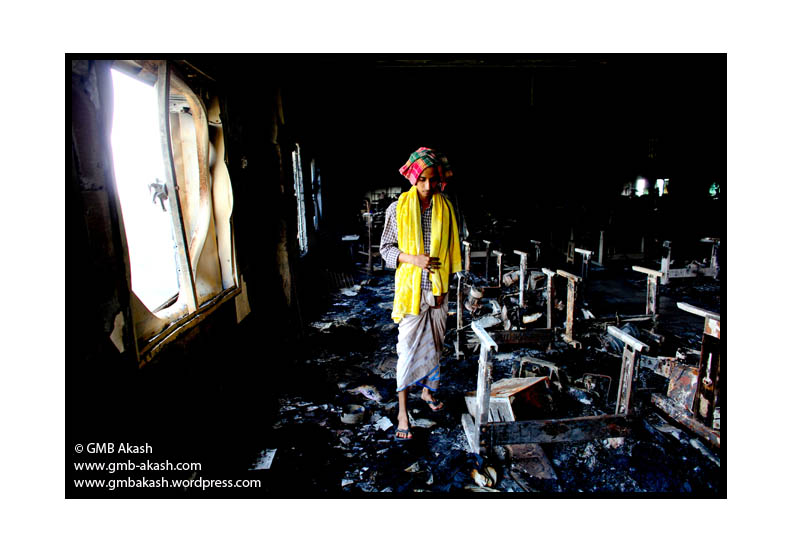
In hospitals things were similar. Injured workers could hardly save themselves from fire, some lost their memory, some were in trauma, poor families had no way to get better treatment. Amongst huge numbers of injured, few were receiving treatment and the rest of the survivors were not getting treatment and were lying at home as they had no money. A survivor Kushi stated that after jumping from the third floor she broke her legs and cried at least one hour for help but no one was there and eventually she lost her sense.
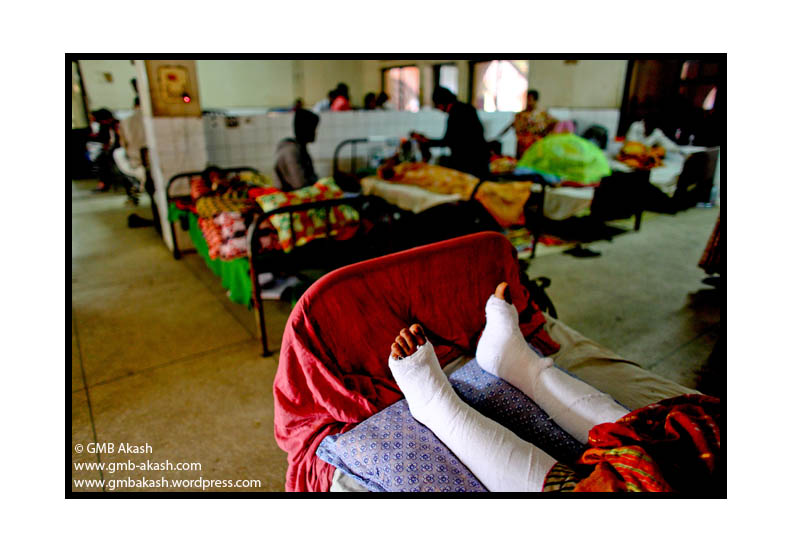
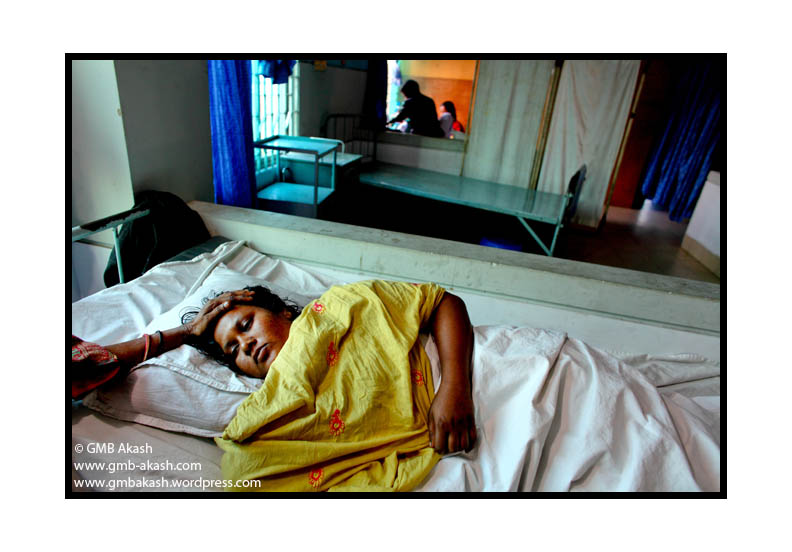

The living conditions of these garments workers are not rosy either. Jhilpar Slum accommodates at least 20000-30000 textile workers and as in this slum garment workers live throughout industrial hubs with daily struggles. Rooms of 10 feet by 10 feet accommodate a minimum of four women workers where the monthly rent is 3000 tk. One toilet and one kitchen are allocated for ten families of the slum. But still after having this trouble, passing through narrow life lines women garments workers are appreciating their lives as an independent being but incident like fire in Tazreen Fashions has brought out all their hidden frustrations.
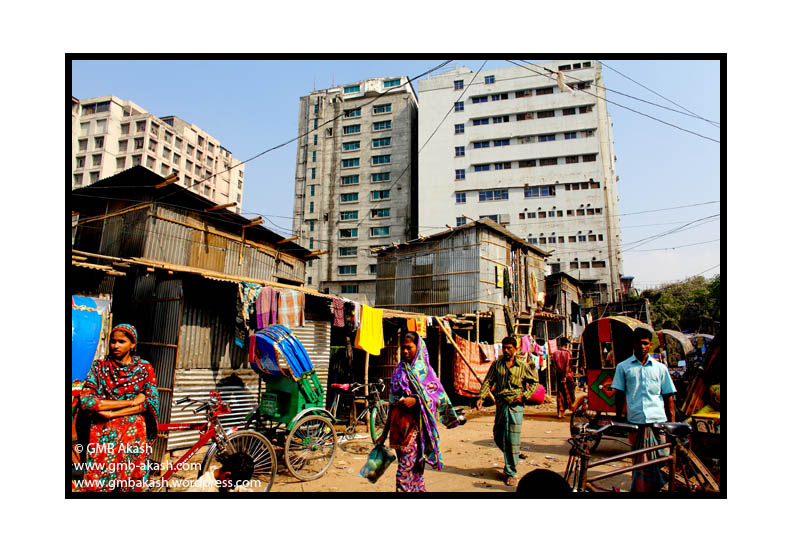
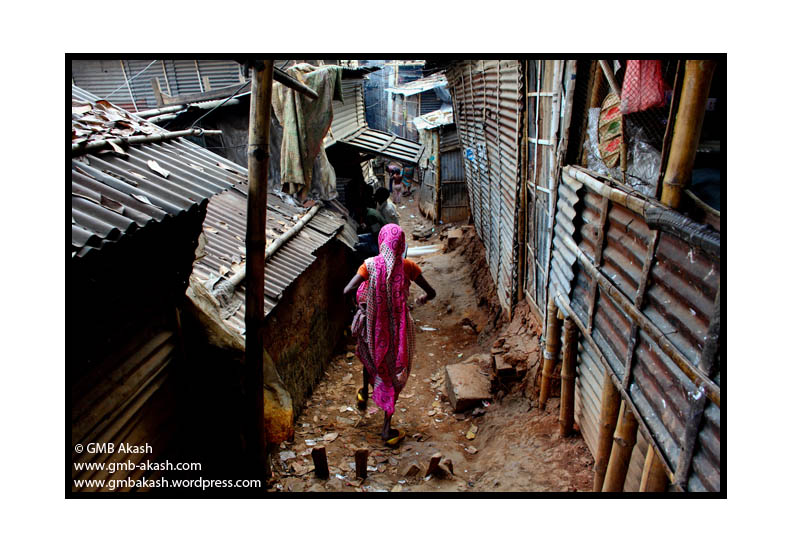
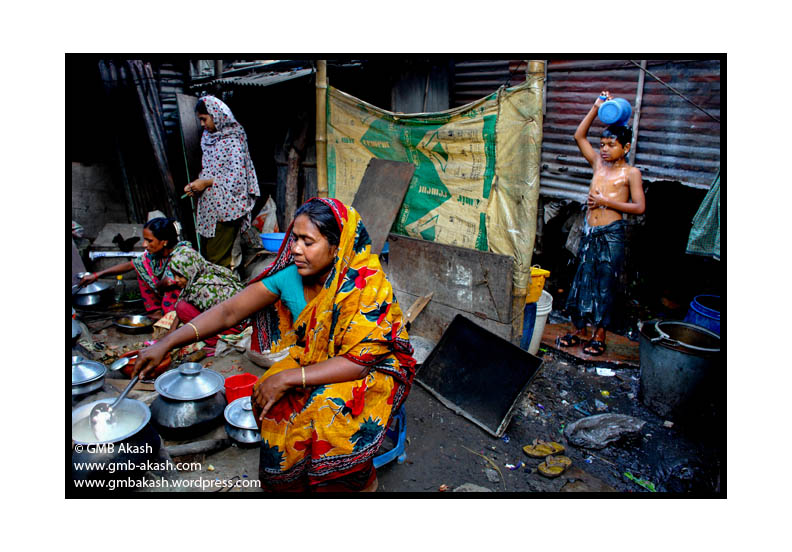
Accompanying workers as they fought for their due salaries I also faced problems with police officers. They tried to stop me for taking photos and said many times that I was ruining my country?s reputation. Even in many cases the injured, victim?s families and workers faced continual negligence by police, local authority even after so much pressure from national and international media and having consolation from all over the world they had to fight for their due salaries. At the end of the day they know they have to fight for their rights after losing their dear ones and even facing fire may be easier than earning rights and justice.
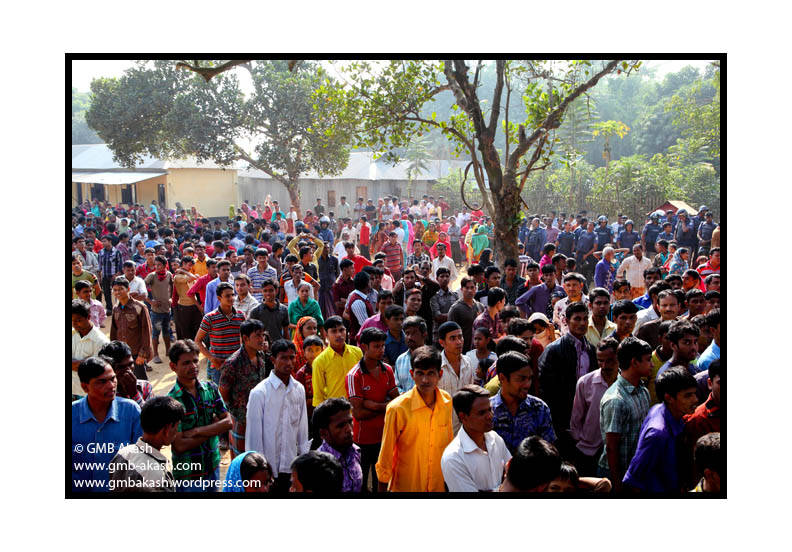
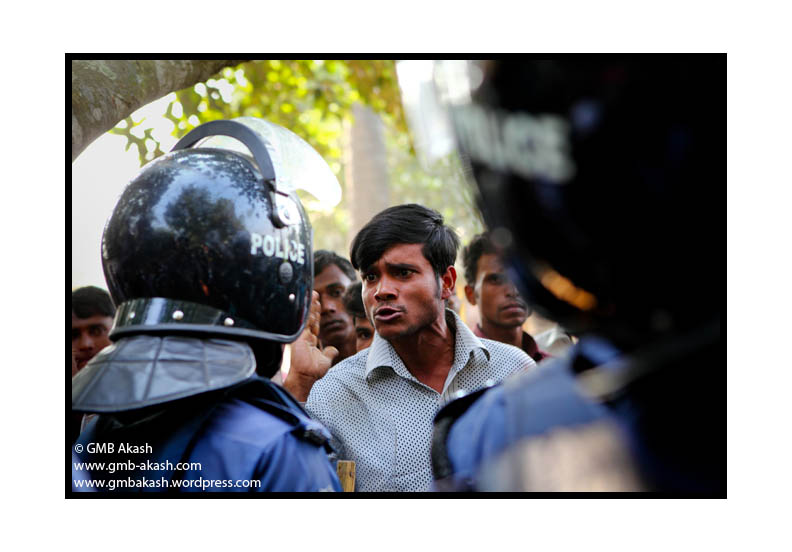
Nilufar lost four members of her family. While she received a call from her brother, she heard only his shout, ?Save us!? ?Help Us?! The phone was on the line for 20 minutes & she helplessly heard the sound of wounded peoples and their mourning. She passed the whole night in front of the factory gate along with her two little brothers. While rescuers had lined up all the recovered bodies on the grounds of a nearby school, Nilufar unzipped bag after bag, searching for her mother, father, brother and sister-in-law. She said the charred human remains looked like chunks of coal, but nowhere did she find the bodies of her lost dear faces. When police wanted ID cards of these four members she replied, ?I cannot find their burnt bodies after running for three days, where the hell will I find ID cards!? The tragedy does not end here; they have a long future to bear the wound with them with a tragic memory in mind.

?While leaving the place I heard, a mother exclaim that her son?s blood demanded justice. We all know their sweat, their blood are asking for answers. No, we can?t stand more loss. No space for further burials. Each drop of blood, each drop of worker?s sweat asks for JUSTICE. Nothing more, nothing less? ? GMB Akash
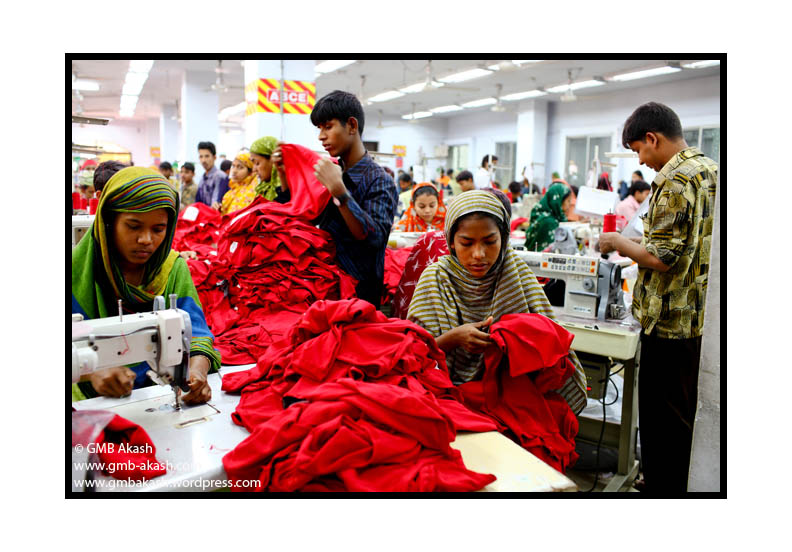
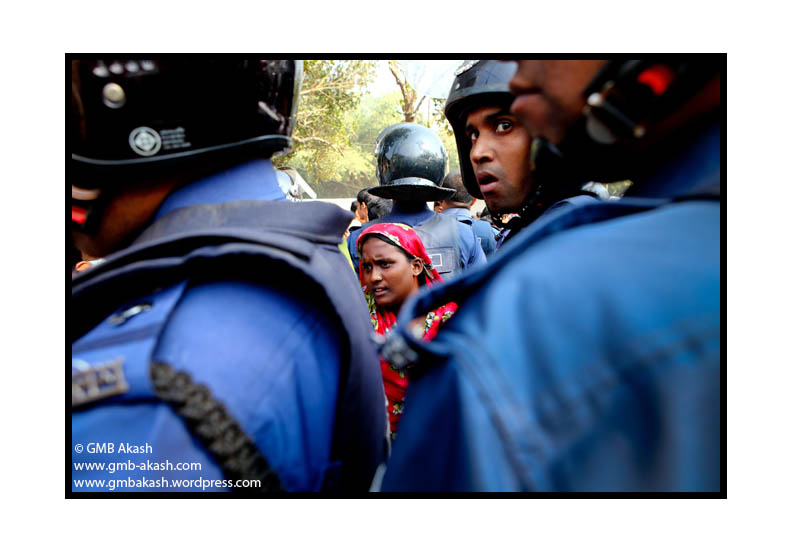
 ? GMB Akash is a student of the first batch of Pathshala.
? GMB Akash is a student of the first batch of Pathshala.

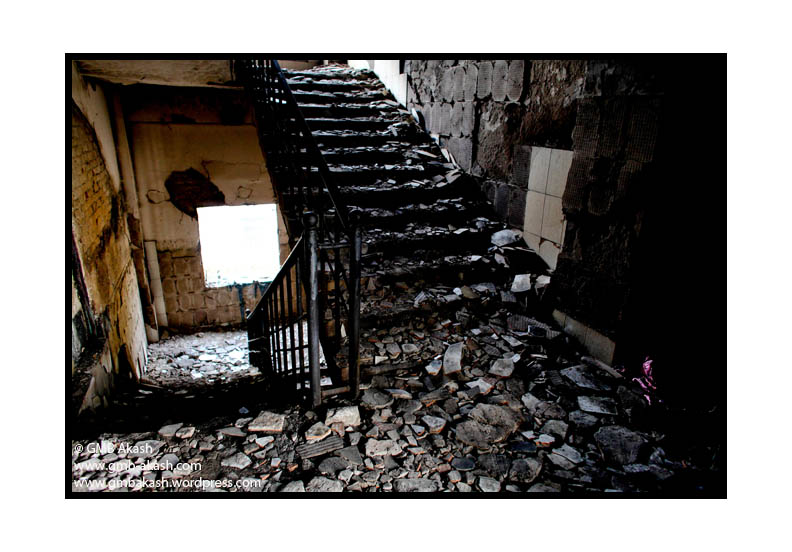




Leave a Reply
You must be logged in to post a comment.